The end of our 2013 safari season is soon approaching, but we’ve been gratified with some really exceptional sightings throughout the past five months. We’re sharing here a glimpse of the season, through our top five sightings.
Wild Dogs – June 2013
It was on June 10th that we had our first sighting of a pack of wild dog. They were found by one of our drivers, taking guests back to the airport in the early morning. The dogs were right by the main road between our camps Mwamba and Kaingo, in the northern part of South Luangwa National Park. There was 7 of them, including a pregnant alpha female.
The dogs were seen again that same afternoon, a couple more times the following days. And then they were gone…
That is until July 6th, where they were found at midday, in the wide open area of Lion Plains – on the move as always. We had a small group of keen photographers that were just arriving from the airport, and they were well rewarded.
The next sighting of the dogs was in the early evening on July 13th, and that was to be the last one of the season (at least as these lines are being written). When the bush becomes quite dry, the lions become very active in our area, and wild dogs like to keep away from lions! Hopefully they’ll be back “en masse” next season.
Lions on Buffalo followed by rival flight – September 2013
As just mentioned, with the season moving on, the bush getting drier and the water less available, the game concentrates towards the Luangwa River. And this becomes one of the preferred spots for lions, as prey is readily accessible. Numerous lion kills have been witnessed, but this particular one – of a buffalo – was quite special because not only was the actual kill observed from beginning to end, but it was followed by a very rare sighting of a fight between two male lions of rival prides.
It was on a morning drive, just after 06h00, the guide was quick to spot the Mwamba-Kaingo pride, which totals up to 20 lions and cubs, that was stalking a buffalo. Buffalos are tough animals, and it requires several lions to work as a team to bring it down. But this time, it wall went fairly fast, and in no time was the buffalo down, and the gruesome scene of bloody and snarling lions began.
The guests stayed on the scene for about 2 hours, and went away for a tea break. But decided to come back afterwards, and that was when it all happened.
One of the lionesses became very curious, and was looking towards the river. It turned out that a male for the rival pride, the Nsefu pride, which occupies an area on the other side of the Luangwa river, had crossed the water and was lying nonchalantly on the beach!
One of the two male from the Mwamba-Kaingo pride noticed it too, and immediately went after the intruder. He stalked him for about 200 meters of open sand beach, and was literally one meter away when the intruder noticed it, and the fight began. It was short lived, the intruder didn’t ask for more and fled, running along the beach, to finally cross again – oblivious to potentially lurking crocs!
In the meantime the entire pride, which had remained near the buffalo kill, joined in chorus and was roaring to support their victorious male.
Pictures courtesy of Regine Lacroix
New lion Cubs – September 2013
Lion cubs are always a favorite among safari-goers, and for good reason. Earlier in the season, we had greeted new cubs among one of the lion prides in our area, only to lose them shortly after that. Such is the hard life in the wilderness. So it was with great excitement that we welcome the news of new cubs, sighted on September 8th. They were very young, maybe a month or so, and still with their mother, away from the pride (the Mwamba-Kaingo pride).
They have been seen on numerous occasions now by our guests, including the morning they were introduced to the rest of the pride. We’re hoping all these cubs will make it and grow up to become healthy lions of the South Luangwa valley.
Pictures courtesy of Anna bulleid ( Peregrine Travel Australia )
Aardvark – September 2013
We have had two sightings of an aardvark earlier in the season, but it was this sighting on September 21 that wins it all. Just before coming back at the end of the evening drive (in South Luangwa we do night drives, to look for nocturnal animals – with the help of a spotlight), our safari guide decided to take a quick look around a beautiful ebony forest where porcupines are often seen. But this time, he was rewarded by a long sighting of an aardvark. Aardvark, one of the ant-eater species, are very rarely seen – some of us who have been on hundreds of safaris have yet to see one – and the sightings are usually very brief as the animal is shy and runs away. Not this time, this one even offered our guests the opportunity to take a few pictures!
The sighting allowed us to locate the den where the aardvark was resident (they can change very frequently) and we placed a couple of camera traps over the following days, and managed to catch a few clips of this elusive animal!
Pictures courtesy of Kaingo Camp guests Annette and David Volfing.
Birth of a Puku – October 2013
There is so many things to see on safari, and some days, one can feel so unbelievably touched by what nature brings his or her way! As we say, you never know what’s around the corner, whether it is a large herd of elephants, or an elusive leopard. But on the evening of October 6th, it was a sighting of another nature that was witnessed by our guests: the birth of a baby puku. Pukus are antelopes which breeds all year round, and young ones can be seen with their mothers throughout the season. But actually witnessing the birth is very rare, as they usually take place behind tall grass, away from any disturbance.
It was just before sunset, with the last rays of sun. It took about 20 minutes for the mother to drop her fawn, and for the young puku to struggle up its feet, and finally suckle. As for most antelopes, the babies have to be quick on their legs, to run away from predators and follow their mothers.
Article by: Izzy Defourny
Shenton Safaris
Kaingo Camp & Mwamba Bush Camp
South Luangwa National Park
Website: www.shentonsafaris.com

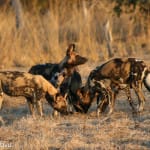
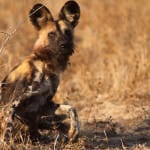
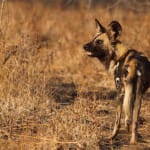
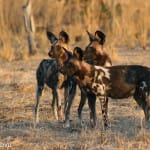
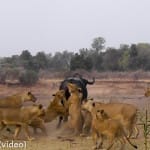
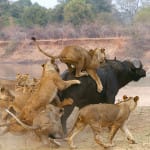
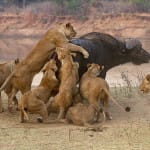

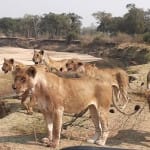
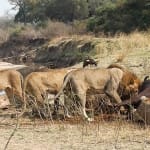
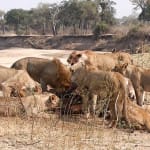
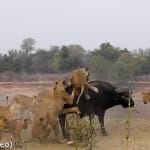
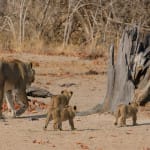
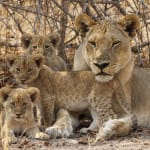
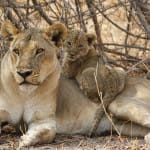

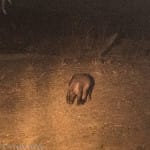
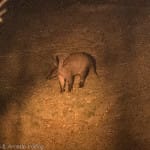
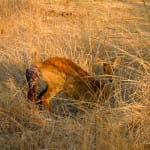
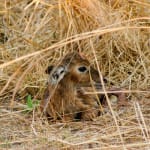
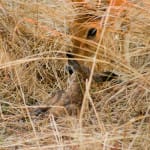
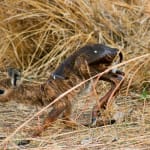
Leave A Comment